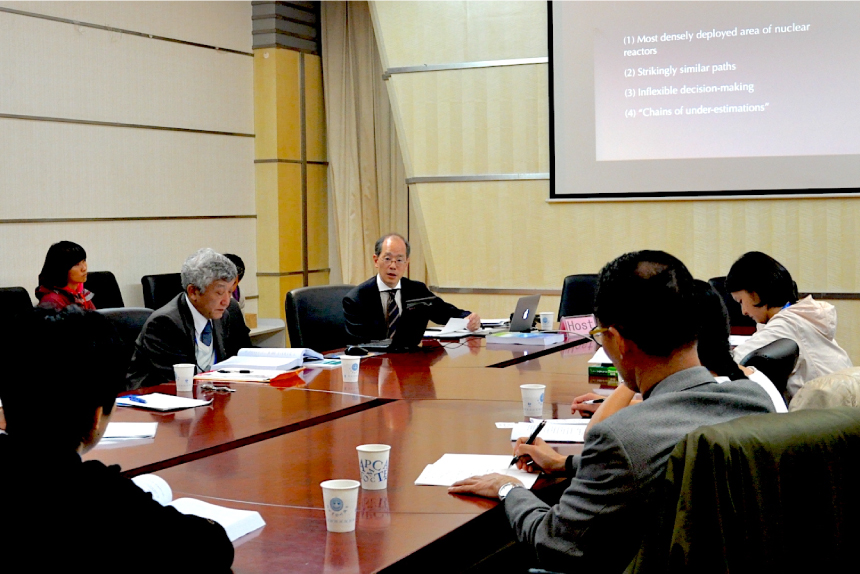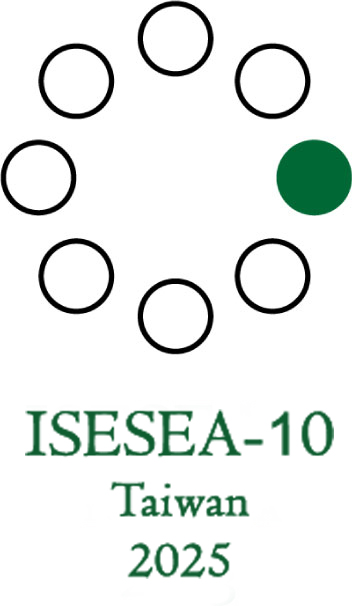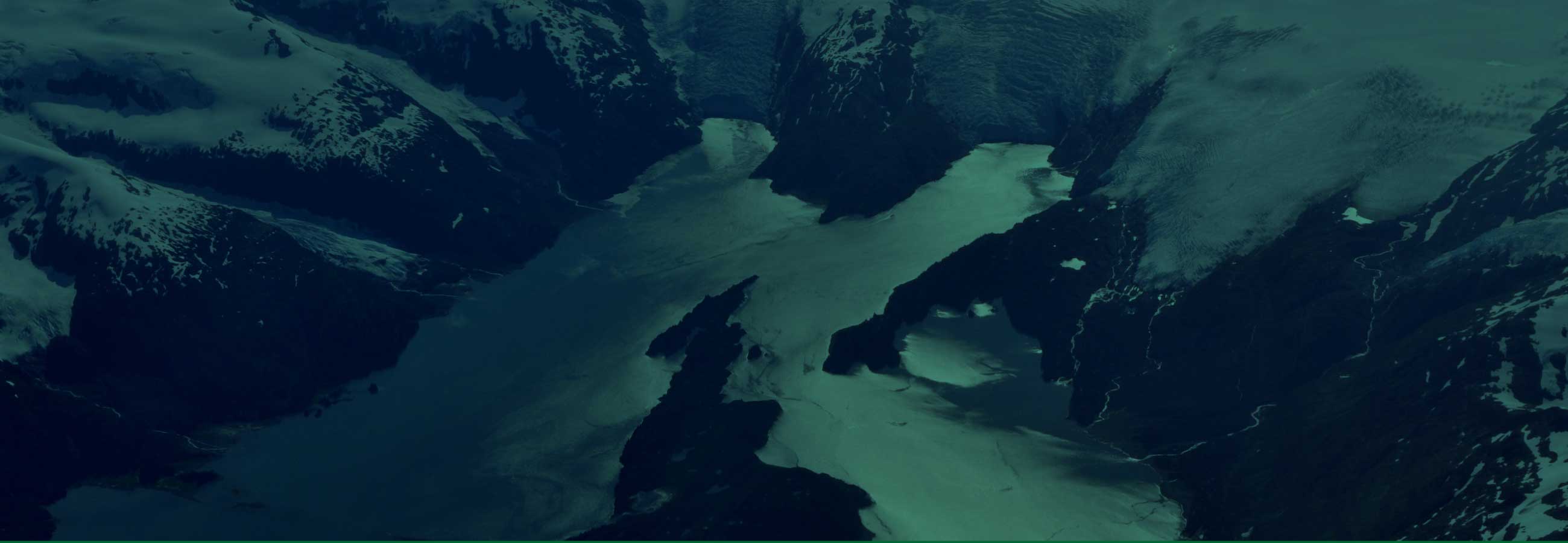
For Our Shared Environment and Future
Since 2008, every 2 years the Associations of Environmental Sociology in East Asia have taken turns in hosting the International Symposium on Environmental Sociology in East Asia (ISESEA; pronounced as “I-see-see”).
This International Symposiums have created stimulating spaces for researchers and practitioners in East Asia and beyond, to exchange ideas, find new approaches and forge friendships.
Most recent symposium

ISESEA-10 Taiwan (31 Oct. to 2 Nov. 2025)
The 10th International Symposium on Environmental Sociology in East Asia
The 10th ISESEA, marking Taiwan's third time to host the symposium, will be organized by the Risk Society and Policy Research Center (RSPRC), College of Social Sciences, National Taiwan University, under the support of ISA RC 24. The symposium will be held from 31 Oct to 2 Nov, 2025, under the theme "Transboundary Climate and Environmental Governance in East Asia."
Contact
Further information, please Contact (Email):
yuasa[at]kanto-gakuin.ac.jp
Prof. Yoichi Yuasa
Japanese Association of Environmental Sociology)
About ISESEA

Once Upon a Time in Beijing ....
The idea of bridging the gap between academic societies in East Asia is nothing new. In fact, there have been a couple of sporadic endeavors in the past to connect sociologists specialized in environmental issues and environmental sociology among East Asian societies. The Japanese Association for Environmental Sociology [JAES] organized an international symposium back in 1993. Bukkyo University in Kyoto, Japan, put together another international conference in 2001. The mailing list has been established among the participants of those symposia and e-mails were sent and received. But the networks that were formed during those events did not last long. When the excitement of a conference and the thrill of starting something new were gone, the network was gone, too.But it was all different when the international symposium was organized in Beijing in 2007. With more than 120 participants, it was a success. On the final day in Beijing, key scholars agreed to have a series of symposia in Japan, China, Korea and Taiwan. Those scholars knew what they needed was sustained efforts to keep the network alive, not something sporadic.
Tokyo: Where It All Began
Following the agreement reached in Beijing, the very first symposium of what would later come to be known as the ISESEA-1 was held at Hosei University in Tokyo, Japan, in November 2008. Leading scholars from across East Asia gathered in this 3-day intensive symposium with more than 150 participants. Following the tradition of “the excursion” held at each annual meeting of the JAES, there was a field trip made to places where environmental disruptions were pressing issues. This was very well received by the scholars from overseas. Both the symposium and the field trip were huge successes.During the ISESEA-1, it was agreed to hold the Symposium every 2 years (except the ISESEA-2) by taking turns among environmental sociology associations in Japan, Taiwan, Korea, and China. In fact, a total of 8 ISESEA symposia have been held so far, as follows:
ISESEA-2: Shinchu, Taiwan (National Tsing Hua University), 2009
ISESEA-3: Buchon, Korea (The Catholic University of Korea), 2011
ISESEA-4: Nanjing, China (Hohai University), 2013
ISESEA-5: Sendai, Japan (Tohoku University), 2015
ISESEA-6: Taipei, Taiwan (National Taiwan University), 2017
ISESEA-7: Seoul, Korea (Seoul National University), 2019
ISESEA-8: Kunmin, China (Yunnan Minzu University), 2021
[ISESEA-9: to be held at Kanto Gakuin University, Yokohama, Japan, 2023]
Each ISESEA was unique in content and style, but friendliness, intensive discussion, and field trips are common features of ISESEA symposia.
The Things Achieved and Accomplished
It is true that there were some uneasy moments during our conversations at the ISESEA Tokyo back in 2008, for we had to communicate with each other in a language none of us was familiar with: English. Despite these difficulties, our relationship evolved over time and we became closer and closer as we kept meeting again and again at ISESEA symposia. Based on the friendship we garnered over the years, some international research projects have been embarked upon and their fruits have been published. The followings are good examples of such international collaborations:
• GWEC Editorial Committee, ed., A General World Environmental Chronology (Tokyo: Suirensha, 2014)
• 陳阿江編『環境社会学是什么:中外学者』(北京:中国社会科学出版社, 2017) [Ajiang Chen, ed., What is Environmental Sociology?: Chinese and Foreign Scholars Speak (Beijing: China Social Sciences Press, 2017)]
• Kuei-Tien Chou, ed., Energy Transition in East Asia: A Social Science Perspective (London: Routledge, 2018).
• Kuei-Tien Chou, ed., Koichi Hasegawa, Dowan Ku and Shu-Fen Kao, eds., Climate Change Governance in Asia (London: Routledge, 2020).
• Kuei-Tien Chou, ed., Koichi Hasegawa, Dowan Ku and Shu-Fen Kao, eds., Air Pollution Governance in East Asia (London: Routledge, 2022).
• So-Young Lee, ed., Special Feature: Just and Sustainable Transitions in Net-Zero Asia, Sustainability Science 18, 2053-2180 (Springer Nature, 2023)
Those publications would not have been possible without the ISESEA symposia where mutual trust was fostered among East Asian scholars. The ISESEA is, therefore, not just a series of symposia; it is a platform for international collaboration among environmental sociologists in East Asia.
The Logo
The logo is a magnetic compass. The green circle in the 3 o’clock position signifies “East Asia” and the color green symbolizes ecological values. The logo was confirmed as the official logo of ISESEA by the International Board in December 2015.



